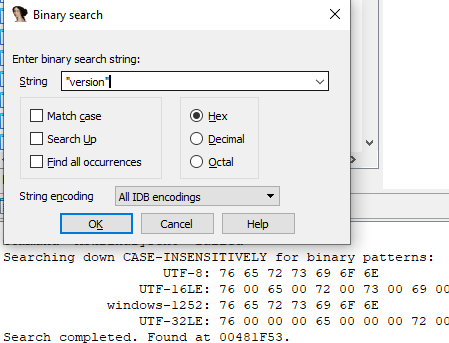

Information about the more formal aspects of reverse engineering (or, "why are there all of these papers about theoretical computer science and mathematics?") r/ReverseEngineering's Latest Hiring Thread A moderated community dedicated to all things reverse engineering. """ def _init_ ( self ): super ( AVXLifter, self ). microcode_filter_t ): """Ī Hex-Rays microcode filter to lift AVX instructions during decompilation.

The following template demonstrates how we can cleanly map an unsupported instruction of interest (eg, vxorps) to a function that will be dedicated to lifting that instruction:Ĭlass AVXLifter ( ida_hexrays. Using the python microcode bindings, we can start building out a simple lifter by subclassing microcode_filter_t. This is an ideal place for us to install a custom lifter that will help the decompiler ‘fill in the blanks’ at the lowest level. The SDK states that by implementing a microcode filter, we can receive callbacks as the decompiler is generating the microcode for each instruction that falls within a decompilation request. Before microcode generation for an /// instruction all registered object will be visited by the following way: /// if ( filter->match(cdg) ) /// code = filter->apply(cdg) /// if ( code = MERR_OK ) /// continue // filter generated microcode, go to the next instruction struct microcode_filter_t / An instance of a derived class can be registered to be used for /// non-standard microcode generation. - /// Generic microcode generator class. Sometimes this is okay, but other times it can be rather confusing, if not misleading: Since the decompiler does not know how to ‘lift’ AVX instructions to the Hex-Rays microcode, the pseudocode will simply inline their assembly. When present, most applications include both SSE (legacy) and AVX (modern) versions of the relevant functions to ensure compatibility with CPU’s that predate AVX (2011). This is not unreasonable, because AVX usage is still relatively rare. Out of the box, the Hex-Rays 圆4 decompiler does not support AVX instructions. By lifting compiled code to an intermediate language, Hex-Rays can apply a generic set of rules and analysis algorithms to decompile code from any architecture.Īt this point, there are a number of existing resources that discuss the Hex-Rays microcode and its implementation in great detail so we will simply move on to the problem at hand. Like most IL’s, its purpose is to provide a portable and architecture-agnostic platform suitable for program analysis.


The Hex-Rays microcode is an intermediate language (IL). The Hex-Rays microcode makes up a RISC-like intermediate language


 0 kommentar(er)
0 kommentar(er)
